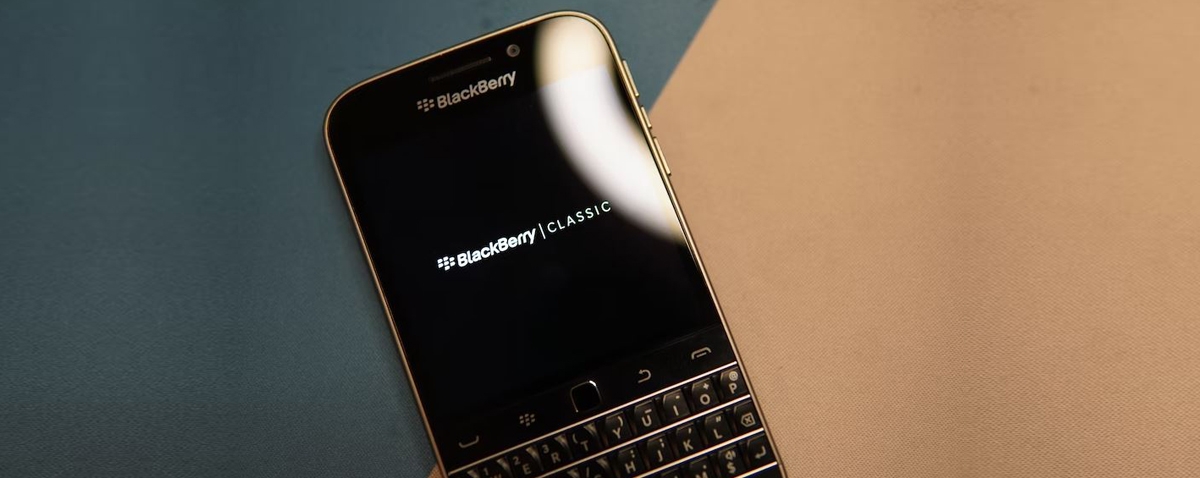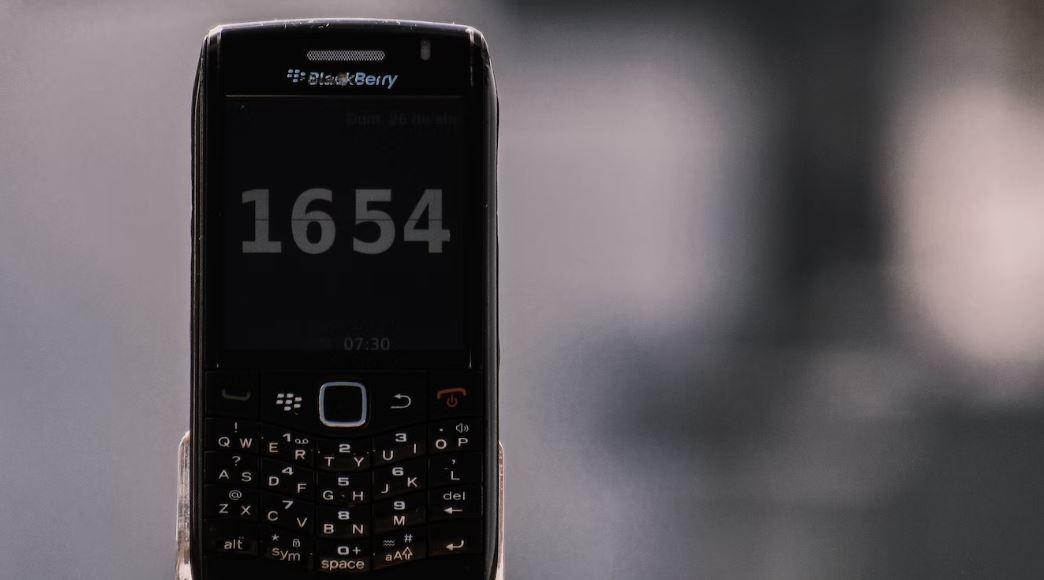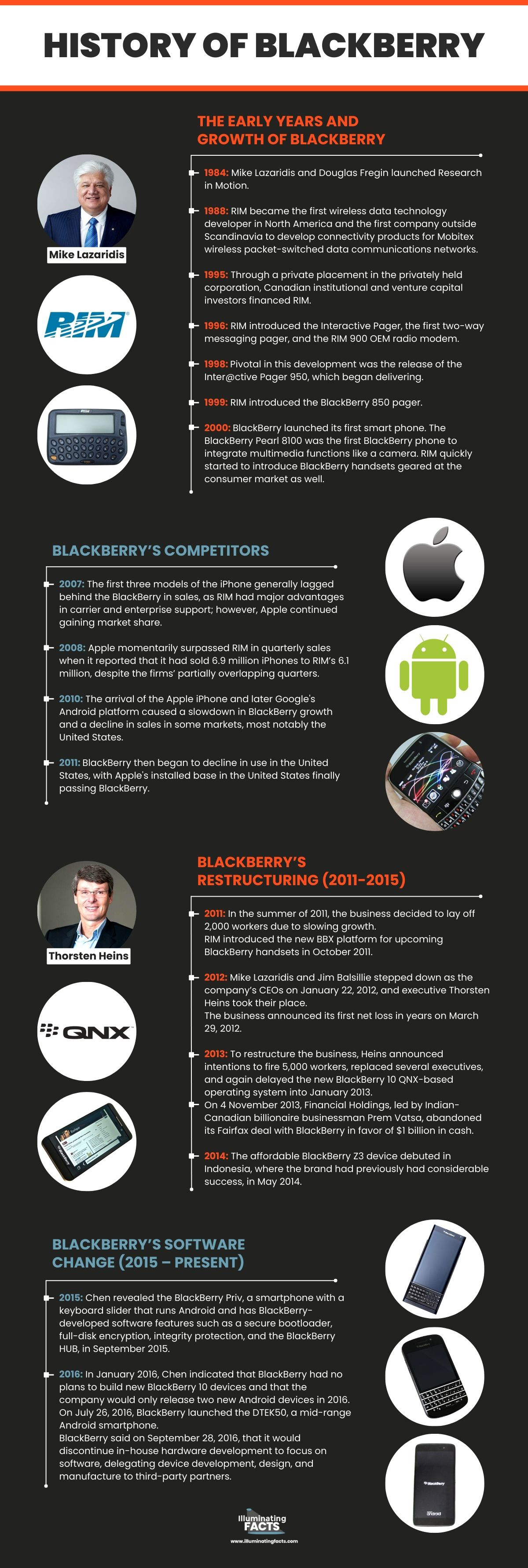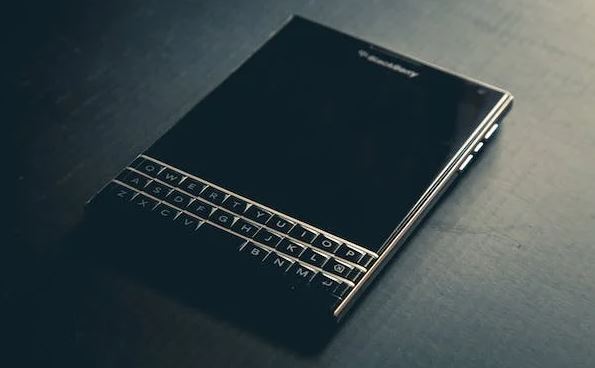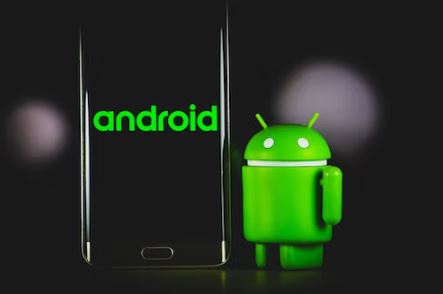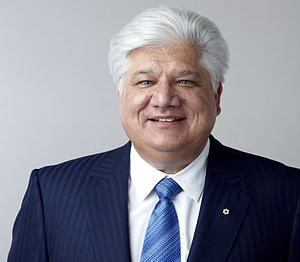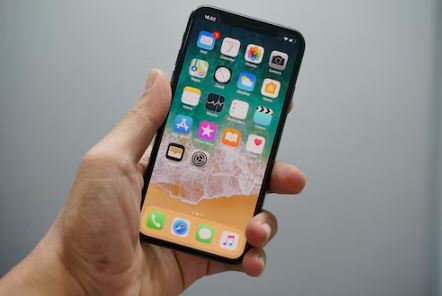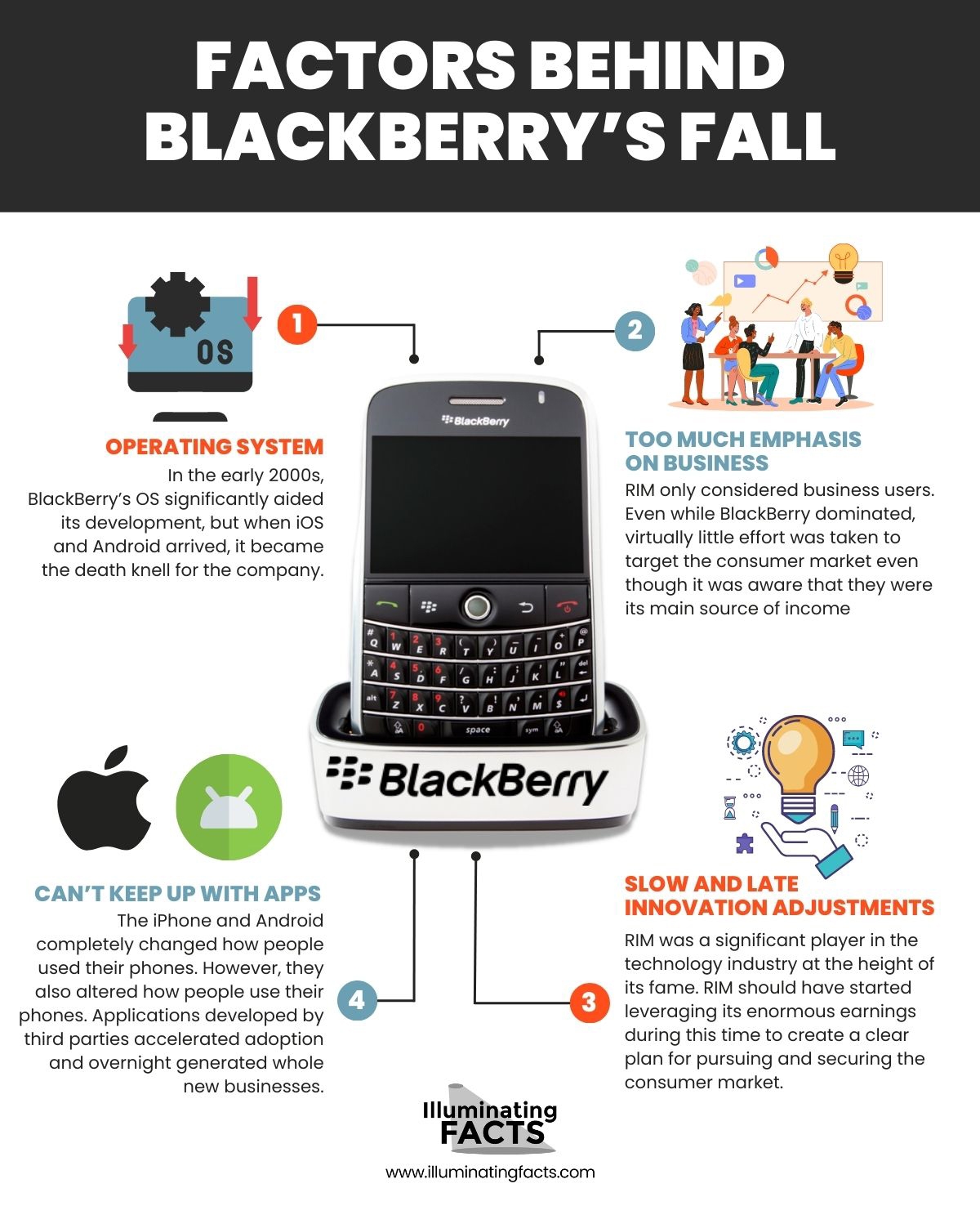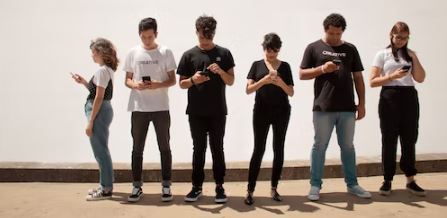Background
BlackBerry is a smartphone series of devices developed by a Canadian company called Research in Motion also known as RIM from 1999 to 2016. Research in Motion’s 850 pager served as the forerunner of the BlackBerry in 1999.
The device, which included a tiny keyboard and wireless e-mail connectivity, allowed users to send and receive messages while they were on the road. Soon after, RIM unveiled the RIM 857, a quicker, more potent gadget. The 857 could sync with both personal and professional email accounts. Only 25,000 customers were using these new devices in the first year of sales, but that number swiftly climbed.
In 2002, the first BlackBerry phones were made available. The new smartphones which provided cellular phone service, wireless e-mail functionality, and internet access completely revolutionized the business. BlackBerry-compatible phones rapidly became available from cellular phone companies. However, BlackBerry’s initial success was almost incomplete.
The introduction of new devices was delayed by patent issues with NTP Inc., an American patent holding corporation. In addition, A patent is a federal government-granted privilege that allows an inventor to prevent others from creating, selling, or utilizing his or her creation for a set length of time. The patent system is intended to stimulate original and beneficial ideas.
By the user-defined rules, BlackBerry continuously received emails, calendar updates, and data files via the Internet and cellular phone network. This is referred to as Push Technology, and NTP Inc. asserted that they owned a patent on a variant of the technology in 2001 when they sued RIM for patent infringement. The lengthy legal dispute that followed almost caused BlackBerry’s service to be discontinued. And In n 2006, NTP and RIM settled in accordance for more than $600 million, as part of which NTP gave RIM permission to use its patent.
All BlackBerry phones had real QWERTY keyboards. The QWERTY keyboard layout is the most common or standard English language keyboard layout or letter grouping on a keyboard. RIM’s mobile business grew exponentially, beating its competitors and causing brands such as Nokia to worry about their market share. And corporate users drove the majority of RIM’s early rise in growth.
The BlackBerry Storm is a touchscreen smartphone released in 2008. Although BlackBerry’s user base continued to expand until 2013, the iPhone and Android-based handsets like the Samsung Galaxy had surpassed it in terms of market share. BlackBerry became RIM’s name in 2013. BlackBerry stopped support for its smartphones in 2022 after the firm declared in 2016 that it would stop producing smartphones and instead focus on software and cybersecurity services. [1]
History of BlackBerry
With its iconic QWERTY keyboard and pioneering in delivering email services to handheld mobiles, BlackBerry became an instant favorite of the innovative world, corporate executives, and the rich and famous alike. Owning a BlackBerry device was formerly considered a status symbol. [2]
The Early Years and Growth of Blackberry
Mike Lazaridis and Douglas Fregin launched Research in Motion in March 1984. Mike Lazaridis was born on March 14, 1961. He is well-known for being an entrepreneur while Douglas Fregin was born in Canada. Douglas co-founded Research in Motion with childhood buddy and fellow billionaire Mike Lazaridis. Fregin played a key role in developing the initial circuit boards utilized in early versions of the company’s wireless technology. He was also instrumental in the selection of materials that were common in the BlackBerry. Douglas Fregin, the company’s former vice president of operations retired in 2007. [4] [5]
Lazaridis was a University of Waterloo engineering student at the time, while Fregin was a University of Windsor engineering student. RIM was the first firm outside of Scandinavia to produce connectivity solutions for Mobitex wireless packet-switched data communications networks in 1988, making it the first wireless data technology developer in North America. Mobitex is a narrowband packet-switched PCS network developed for wide-area wireless data transmission.
Through a private placement in the privately held corporation, Canadian institutional and venture capital investors financed RIM in 1995. Working Ventures Canadian Fund Inc. sponsored the initial venture round with a $5,000,000 investment, with the profits going toward the completion of RIM’s two-way paging system hardware and software development. Before its first public offering (IPO) in January 1998 under the symbol RIM, the business raised a total of $30,000,000 in pre-IPO financing.
1996
RIM released the first two-way messaging pager, the Interactive Pager, as well as the RIM 900 OEM radio modem. The company collaborated with RAM Mobile Data which provides mobile data communication solutions like track-and-trace and mobile work order apps and Ericsson a multinational Swedish networking and telecommunications corporation located in Stockholm that supplies information and communications technology infrastructure, software, and services to telecommunications service providers and companies to transform the Mobitex wireless data network developed by Ericsson into a two-way paging and wireless e-mail network. The release of the Inter@ctive Pager 950, which began delivering in August 1998, was pivotal in this evolution. The device was about the size of bar soap and competed with Motorola’s Skytel two-way paging network. [7]
1999
BlackBerry 850 pager was introduced by RIM. The device could receive push emails from a Microsoft Exchange Server using its companion server software, BlackBerry Enterprise Server. It was so named because the keyboard’s keys resembled the droplets of the blackberry fruit. The BlackBerry’s release paved the way for the company’s upcoming enterprise-focused products, including the BlackBerry 957, the first BlackBerry smartphone, which was released in April 2000.
While the addition of encryption compatibilities helped BlackBerry, handsets gain more traction among enterprises and governments, the BlackBerry Operating System (OS) platform and Blackberry Enterprise Server, or BES, continued to expand in capability. The RIM’s balance sheet’s total assets increased eightfold during the fiscal years 1999 and 2001 because of significant capacity growth.
The Growth of BlackBerry in the 2000s
The BlackBerry Pearl 8100 was the first BlackBerry phone to integrate multimedia functions like a camera. RIM quickly started to introduce BlackBerry handsets geared at the consumer market as well. The Bold 9000 and Curve 8300 series that followed the Pearl series’ debut both had tremendous success. The rapid growth of BlackBerry customers globally in both the enterprise and consumer markets was powered by extensive carrier partnerships.
BlackBerry continued to grow its market share until 2011, despite the introduction of the first Apple iPhone in 2007. RIM created its first touchscreen smartphone for the rival network in 2008 and it was called the BlackBerry Storm after Apple’s iPhone debuted on the AT&T network in the United States in the fall of 2007. Although the Storm had strong sales, it received neutral to negative reviews and had low customer satisfaction. Due to RIM’s early start and wider carrier distribution network, the iPhone was initially behind the BlackBerry in terms of both shipments and active users.
In the fall of 2010, the number of BlackBerry users in the United States reached a peak of about 21 million. The business had 36 million users worldwide at the end of that quarter. The BlackBerry started to switch to other smartphone platforms as the popularity of the iPhone and Google Android grew in the US. Despite this, the BlackBerry range kept on succeeding thanks to significant worldwide expansion. As of December 1, 2012, BlackBerry had 79 million subscribers worldwide, with only 9 million remaining in the United States.
BlackBerry’s Competitors
Even as the firm expanded globally, investors and the media became more concerned about its capacity to compete with devices from competing mobile operating systems, iOS and Android. Analysts were concerned about the CEO’s management structure’s strategic orientation. Larry Conlee, the company’s Chief Operating Officer of engineering and manufacturing from 2001 to 2009, also retired. Conlee was not only critical to the company’s platform manufacturing strategy, but he was also a practical taskmaster who ensured deadlines were completed. Conlee also had the clout to push back if Lazaridis had unrealistic expectations.
Following repeated attempts to update its old Java platform, the business made a slew of acquisitions to aid in the development of a new, more powerful BlackBerry platform centered on its recently acquired real-time operating system known as QNX. RIM revealed the long-rumored BlackBerry PlayBook tablet on September 27, 2010, the first product running on the new QNX platform known as BlackBerry Tablet OS, and the BlackBerry PlayBook was formally released to US and Canadian users on April 19, 2011. The PlayBook was chastised for being pushed to market in an unfinished state and selling poorly. Slow sales and inventory pileups forced the company to lower prices and write down the inventory value by $485 million after shipments of 900,000 tablets during its first three quarters on the market.
The Main Competition to Blackberry
Apple’s iPhone and Android-powered handsets are BlackBerry’s main competitors. For many years, especially in the United States, BlackBerry dominated the smartphone industry. BlackBerry’s growth was slowed by the introduction of the Apple iPhone and then Google’s Android platform, which also resulted in drop-in sales in various areas, most notably the United States. As a result, the company’s ability to operate independently was questioned by the media and analysts.
When Apple’s iPhone debuted in 2007, it drew widespread media attention, with several sites dubbing it a “BlackBerry killer.” While BlackBerry sales climbed, the newer iPhone grew at a quicker rate, and the 87 percent loss in BlackBerry’s stock price between 2010 and 2013 may be linked entirely to the performance of the iPhone device.
In October 2008, Apple momentarily surpassed RIM in quarterly sales when it reported that it had sold 6.9 million iPhones to RIM’s 6.1 million, despite the firms’ partially overlapping quarters. Although Apple’s iPhone sales fell to 4.3 million in the next quarter and RIM’s climbed to 7.8 million, some investors saw this as a sign of weakness. With the launching of the iPhone 4, Apple’s iPhone began to sell more phones quarterly than BlackBerry in 2010. [3]
Apple’s iPhone
When approximately 22 million users were using a BlackBerry, the BlackBerry reached its peak in the United States in September 2010. The popularity of BlackBerry in the United States then started to decline, and in April 2011, Apple’s installed base in the country eventually overtook BlackBerry. The market for smartphones and iPhone sales both kept growing, while the number of BlackBerry customers in the US started to decline steadily. Only 1.59 million of the 198.9 million smartphone users in the United States as of February 2016 were using a BlackBerry, whereas 87.32 million were using an iPhone.
Google’s Android Mobile
The competition for BlackBerry has also increased because of Google’s Android mobile operating system, which runs on hardware made by a variety of manufacturers including Sony, Motorola, HTC, Samsung, LG, and many others. Only 3 million of the 42.7 million Smartphones in use in the United States at the time in January 2010 ran Android, as opposed to 18 million BlackBerry smartphones. The installed base of Android in the US surpassed that of BlackBerry in just one year. Only 1.59 million of the 198.9 million smartphone users in the US as of February 2016 were using BlackBerry, as opposed to 104.82 million who were using Android.
While RIM’s secure encrypted network appealed to business clients, consumers viewed its smartphones as less desirable than iPhone and Android smartphones. Consumer applications were frequently created for such platforms rather than BlackBerry by developers. Due to employee feedback, even business clients started implementing “Bring Your Own Device” (BYOD) rules in the 2010s. The company also came under fire for having old hardware and an unattractive operating system in comparison to its rivals, as well as for having subpar browsing skills.
BlackBerry’s Restructuring (2011-2015)
In the summer of 2011, the business decided to lay off 2,000 workers due to slowing growth. Millions of users were affected by a lengthy outage of the company’s BlackBerry Internet Service in September 2011 that lasted several days. The embarrassing breakdown happened as Apple was getting ready to release the iPhone 4S, raising concerns about a mass exodus from the platform.
BBX, a new platform for upcoming BlackBerry handsets that would be based on the same QNX-based technology as the PlayBook, was introduced by RIM in October 2011. However, the platform was renamed BlackBerry 10 due to a claim of trademark infringement surrounding the name BBX. The company delayed its debut from December 2011 to sometime in 2012 because the task proved to be difficult. Mike Lazaridis and Jim Balsillie stepped down as the company’s CEOs on January 22, 2012, and executive Thorsten Heins took their place.
Thorsten Heins advanced through the ranks, first serving as a Chief Operating Officer for product engineering and then as a Chief Operating Officer for product and sales in July 2011. He had previously served as senior vice president of BlackBerry’s handheld division. Heins was chosen in January 2012 to take over as president and CEO from co-founders Jim Balsillie and Mike Lazaridis. The business persisted in its struggles in a market that was undergoing fast change while he was CEO.
Thorsten Heins climbed the corporate ladder from senior vice president of BlackBerry’s handheld division to chief operating officer for product engineering, and then, in July 2011, to chief operating officer for product and sales. Heins was chosen in January 2012 to take over as president and CEO from co-founders Jim Balsillie and Mike Lazaridis. The business struggled in a market that was undergoing significant change when he was CEO. The business announced its first net loss in years on March 29, 2012. To restructure the business, Heins announced intentions to fire 5,000 workers, replaced several executives, and again delayed the new BlackBerry 10 QNX-based operating system into January 2013.
John Chen Joins BlackBerry
On November 4, 2013, Financial Holdings, founded, chaired, and led by Indian-Canadian billionaire businessman Prem Watsa, abandoned the Fairfax deal with BlackBerry in favor of a $1 billion cash infusion, which, according to one analyst, reflected BlackBerry’s largest shareholder’s level of confidence in the business.
Fairfax Financial Holdings Limited is a holding company principally engaged in property and liability insurance and reinsurance, as well as the associated investment management, through its subsidiaries. Fairfax’s corporate goal is to achieve a high rate of return on invested capital while also increasing long-term shareholder value. Fairfax strives to differentiate itself by combining conservative underwriting with total return asset investment, which Fairfax thinks produces above-average long-term returns.
BlackBerry’s agreement with Fairfax concludes the company’s examination of potential new paths to recovery. BlackBerry indicated that it would consider strategic alternatives, including an outright sale. Fairfax Financial had intended to put $4.7 billion into the company to take it private. However, it was unclear whether Fairfax decided against acquiring BlackBerry or whether the firms were unable to reach an agreement.
John Chen took over as CEO of BlackBerry when Heins was fired. BlackBerry hoped Chen, who had a reputation as a turnaround artist, could save the company.
Chen discussed his recovery plan and stated that he planned to invest in or collaborate with other businesses in regulated sectors like healthcare, finance, and legal services. Later, he clarified that his strategy still included BlackBerry’s device division and that his business was aiming to make investments in cutting-edge technologies like machine-to-machine communications. Later, in July 2014, at a BlackBerry Security Summit, Chen would elaborate on this notion.
The affordable BlackBerry Z3 device debuted in Indonesia, where the brand had previously had considerable success, in May 2014. The low-cost phone was made in collaboration with Taiwanese producer Foxconn Technology Group, which oversaw the product’s design and distribution.
BlackBerry’s Software Change (2015 – Present)
Chen revealed the BlackBerry Priv, a smartphone with a keyboard slider that runs Android and has BlackBerry-developed software features such as a secure bootloader, full-disk encryption, integrity protection, and the BlackBerry HUB, in September 2015.
With numerous significant acquisitions, BlackBerry also increased the scope of its software and service offerings. These included competitor EMM provider Good Technology, the file security company WatchDox, and the leader in crisis communications AtHoc which aids government agencies in their preparation for, response to, and recovery from critical disasters and catastrophes in a crisis, BlackBerry AtHoc provides clear and quick information to your team and the public allowing you to keep everyone safe. [6]
These companies’ offerings were gradually rebranded and added to BlackBerry’s line of products. The acquisition would boost BlackBerry’s support infrastructure, add a sizable and varied client base, and support the company’s ongoing revenue growth. The biggest acquisition in BlackBerry’s history demonstrated the company’s dedication to a software-focused turnaround strategy. Regarding the overall prognosis for the company, it remained equivocal.
In January 2016, Chen indicated that BlackBerry had no plans to build new BlackBerry 10 devices and that the company would only release two new Android devices in 2016. BlackBerry also launched the Good Secure Enterprise Mobility Management Suites (EMM), which combines the solutions of WatchDox and Good Technology into many tiered options alongside its existing software.
Embracing Software Transition
On July 26, 2016, BlackBerry launched the DTEK50, a mid-range Android smartphone. Unlike the Priv, the DTEK50 was a re-branded version of an existing smartphone, the Alcatel Idol 4, made by TCL Corporation, a business partner that the company works with hardware. It was to be BlackBerry’s second-to-last in-house phone, following the DTEK60 Android smartphone in October 2016.
BlackBerry said on September 28, 2016, that it would discontinue in-house hardware development to focus on software, delegating device development, design, and manufacture to third-party partners. [1] [2] [3]
The Success of BlackBerry
BlackBerry essentially delivered on-the-go emails to the public in the mid-2000s. Previously, you had to be at a workstation or on your laptop. Other phones may send an email. But not quite as well as BlackBerry, because RIM focused heavily on BlackBerry’s email features to make it the standard against which all other mobile devices were measured.
Several celebrities, including Barack Obama and Kim Kardashian, aided RIM’s brand to no small degree, boosting the attraction of BlackBerry phones to an even wider audience of customers. RIM had phones in every price range by this point, from low-cost phones to more expensive, flagship models.
Back then, the major feature of BlackBerry phones was that they all supplied the same software and functions. They all had BlackBerry Messenger (BBM), which was the primary reason for the handset’s appeal among youths, and they all ran the same email and messaging programs. This was the feature that distinguished BlackBerry phones as truly BlackBerry. [3]
The Fall of BlackBerry
Apple debuted the first iPhone in 2007. Apple was not the company it is now back then. Apple was an outsider at this point, still hurting from its terrible performance in the 1990s. Its iPod however, was a huge success, but its computer company was still second place to Microsoft’s Windows. And its phones had never been tested in the wild.
Growth was initially slow for Apple’s iPhone. This was aided in part by the iPhone’s high price and it was more expensive than everything else on the market. But Apple was playing the long game here; it understood what it wanted to do and, thanks to its expertise with iTunes and iPods, it knew exactly how to carry out a strategy that would propel it to the forefront of the quickly expanding mobile space.
Apple’s strategy was straightforward. Create an App Store, a swarm of developers, a simple but strikingly different phone design, and wait for consumers to wake up and understand what they’re losing out on. It didn’t take long for Apple’s iPhone to gain popularity. It sold 1.4 million iPhones in 2007. By 2011, the figure had risen to 72.2 million iPhones per year.
The introduction of the iPhone and the first Android phones was the opening salvo against BlackBerry. RIM was supposedly caught aback by Apple’s initial iPhone, and this was due primarily to Apple’s design decisions. In comparison to RIM’s BlackBerry smartphones, the phone was almost entirely screen. RIM engineers were certain that the power requirements would be too big for Apple.
However, that was Apple’s best feature. In addition to popularizing touchscreen phones over phones with physical keys like the BlackBerry Touch and BlackBerry Bold, it also launched a completely new mobile platform that was designed from the ground up to dominate the market. It not only got the initial iPhone’s concept right. RIM believed that customers did not want to give up their QWERTY keyboards at the time.
The future of smartphones was apps, as both Apple and Google were aware. Instead of email and security, which were RIM’s main true marketing focuses now, applications and games would be what sparked uptake and sales. Of course, both things were crucial, but Apple and Google demonstrated to customers that there were other uses for mobile devices. [3]
Factors Behind Blackberry’s Fall
Operating System
In the early 2000s, BlackBerry’s OS significantly aided its development, but when iOS and Android arrived, it became the death knell for the company. It was still united to the QWERTY keyboard when the rest of the world had long since moved on, it didn’t support apps like those found on the iPhone and Android, and it looked and felt awkward to use.
Too Much Emphasis on Business
RIM only considered business users. Even while BlackBerry dominated, virtually little effort was taken to target the consumer market even though it was aware that they were its main source of income. Yes, there were achievements, but unlike Apple and Google, which did a great job of locking users into their platforms from the start, RIM did nothing to do the same.
Slow and Late Innovation Adjustments
RIM was a significant player in the technology industry at the height of its fame. RIM should have started leveraging its enormous earnings during this time to create a clear plan for pursuing and securing the consumer market.
Can’t Keep Up with Apps
The iPhone and Android completely changed how people used their phones. However, they also altered how people use their phones. Applications developed by third parties accelerated adoption and overnight generated whole new businesses. BlackBerry once again didn’t do anything. Even when compared to the early versions of Apple’s App Store and Google’s Android Market, its App Store was terrible; BlackBerry App World had only 17,000 applications at its peak.
Interesting Facts About BlackBerry
- Despite shipping the most BlackBerry devices, RIM still lost market share to apple’s iPhone in 2010.
- Injuries that occur because of repetitive use of the Blackberry keyboard was called “Berry Thumb”.
- More than 500 mobile service providers in 91 countries offered BlackBerry internet services.
- BlackBerry smartphones were known primarily for having more messaging features than any other smartphones at the time.
- BlackBerry had 10 different models introduced since the 1990s which sold for over 40 million units.
- More than 500 mobile service providers in 91 countries offered BlackBerry internet services.
- The BlackBerry 9800, which went on sale on August 12, 2010, was the most current product to enter the market for BlackBerry devices
- Before the term “Smartphone” existed, BlackBerry made email portable, which will always be a source of pride for Canadians.
- BlackBerry’s first office was above a pizza shop in Waterloo.
- Jim Balsillie, a co-founder of RIM, remortgaged his home to invest $250,000 of his own money in the business.
- Early on, RIM distributed complimentary BlackBerry smartphones at trade shows to help it gain exposure among businesspeople, the company’s primary target demographic.
- The initial BlackBerry was a pager. It could send emails but lacked a phone. When it came to naming the new gadget, marketing gurus landed on BlackBerry because its QWERTY keyboard reminded them of berry seeds.
- Former US President Barack Obama was notably fond of his BlackBerry. However, only a select few would have been able to call the president in this manner because Obama’s BlackBerry contact list was limited to ten numbers.
- RIM possessed more than 30% of the American smartphone market by 2007.
- Unknowingly, BlackBerry contributed to Clinton’s email issue during the 2016 U.S. presidential election. According to reports, concerns regarding the former Secretary of State’s usage of the email were first raised by an iconic photo of her carrying a BlackBerry aboard a military plane in 2011.
- Like Bill Gates, Mike Lazaridis, co-CEO and co-founder of RIM, left college before founding the business.
- Actress Anne Heche presented Lazaridis with an Oscar for technical excellence for RIM’s Digisync Film Barcode Reader.
- RIM’s first contract was a $600K one with General Motors for networked terminals that would display information to workers on the assembly line.
- LeapFrog was the codename for the 950, the original BlackBerry.
- Oprah Winfrey distributed BlackBerry 7105t cellphones to viewers of her pre-Christmas giveaway show in November 2005. [8] [9]
References:
[1] BlackBerry: A Story of Constant Success & Failure, History from
https://www.investopedia.com/articles/investing/062315/blackberry-story-constant-success-failure.asp
[2] BlackBerry History from
https://www.zippia.com/blackberry-careers-16900/history/
[3] The Rise and (Spectacular) fall of BlackBerry from
[4] The Story of Mike Lazaridis and his BlackBerry from
[5] Douglas Fregin Net Worth from
https://www.idolnetworth.com/index.php/douglas-fregin-net-worth-51978
[6] Critical Event Management with BlackBerry AtHoc from
https://www.globalguideline.com/interview_questions/Answer.php?a=What_is_Mobitex
[7] RAM Mobile Data from
https://www.crunchbase.com/organization/ram-mobile-data
[8] 16 Interesting Facts About the BlackBerry from
https://hothardware.com/news/16-interesting-facts-about-the-blackberry
[9] 10 fun facts about RIM and the BlackBerry from
https://www.networkworld.com/article/2243600/10-fun-facts-about-rim-and-the-blackberry.html

